(¿Lo quieres leer en español? Aquí está.)
The word “grammar” refers both to the rules that govern language production and comprehension and to the study of those rules. As the set of rules and principles governing the use of language, grammar is as old as the oldest of languages!
As the study of the rules, it has a long history. The oldest grammar studies come from ancient India, centuries before our common era, and deal with the rules of the Sanskrit language. The most recognized Sanskrit grammarian was Panini, whose ideas about grammar are still used today! In Europe, grammar emerged as a discipline in Greece, with authors like Aristarchus of Samothrace, who baptized it “the art of letters.” In Ancient Rome, Latin grammar was developed based on Greek ideas, and became a pillar of the the art of eloquence, with rhetoric and dialectics (taught alongside the art of numbers).
The Birth of Spanish

Throughout the Middle Ages, various factors contributed to the birth of Romance languages, including Spanish. Among these factors, the strict grammatical prescriptions of classical Latin drove a wedge between the language of scholars and the vulgar or popular Latin spoken by uneducated people. Also, the new geopolitical conditions of a fragmented empire furthered a linguistic fracture that gradually gave rise to heterogeneous (region-specific), although interrelated, vernacular languages.
In Spain, a variety of Romance languages coexisted for centuries, including Galician, Castilian, Leonese, Catalan, and Asturian. At the end of the XI century, a process of linguistic reunification began thanks to the rise of Spanish as the language for the chansons de geste. These epic poems served as example, inspiration, and entertainment, much as the heroes and stories in today’s Marvel movies. In the second half of the XIII century, during the reign of Alfonso X of Castile and Leon, Spanish acquired official status. The king had all official documents written directly in Castilian or translated into Castilian, rather than having them in Latin, as it had been the custom until then.
The political rise of the new languages inspired the interest to study them in their own right. The Sevillian Antonio de Nebrija was the first scholar of Romance languages to understand the importance of writing down their rules. Thus, in 1492, he published in Salamanca his Gramática de la lengua castellana, which is not only the first book on the grammar of the Spanish language, but also the first book on any Romance language at all. In the prologue to Queen Elizabeth the Catholic, he states:
“When I think to myself, my enlightened queen: […] and I put before my eyes all that has been written for our memory and remembrance, one thing I find and I draw to a certain conclusion: that the [Latin] language was always a companion of the [Roman] empire; such was their association that together they rose, grew, and flourished, and later together they fell […] And because my thought and will have always been to magnify the achievements of our nation, and to give the men of my language books to make the best use of their leisure […], I decided before all other things to lay down the art of our Castilian language. Thereby, what is henceforth written in our language may remain in a style and endure the test of time, as has been done with Greek and Latin, for the study of their art has allowed them, through the many centuries of their existence, to endure in their uniformity.”
(My translation.)
Spanish Sets Sail
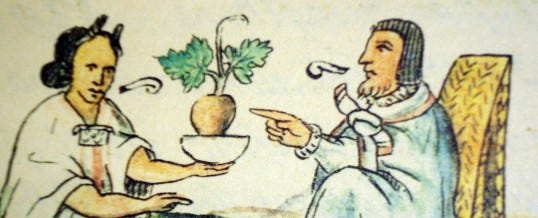
It may not escape the reader that that same year of 1492, Christopher Columbus was authorized by the Catholic Monarchs to seek new trade routes to the Indies across the Atlantic. Spain, like many previous kingdoms, sought to expand its power. During this expansion, the discovery and subsequent conquest of a new continent led to the spread of Castilian as a lingua franca.
However, the process of Castilianization was much slower than the geopolitical and religious expansion. This expansion was accelerated by the papal concession of lands to the kingdoms of Spain and Portugal as vicars of the Catholic god. Spain claimed vast territories of the Americas as their own (aided by the Tordesilles Treaty that delineated the claiming rights of Spain and Portugal.) As a result of these territorial claims, the indigenous people already living in the Americas were deemed subjects of the crown: they had to be christened and taxed.
The task of communicating with the natives fell mainly on the missionaries. In their quest to convert the natives to their faith, the missionaries also spoke up for native rights. To a great extent, the missionaries advocated for the use of native languages, and were devoted to developing teaching materials, such as grammars and bilingual glossaries. A famous sermon given before Christmas in 1511 by Antonio de Montesinos, exhorts:
“Are they not men? Do they not have rational souls? Are you not bound to love them as you love yourselves? How can you lie in such lethargic slumber? Rest assured that in your present state, you can no more be saved than the Moors or the Turks who have no want or fear for the faith of Jesus Christ.”
(My translation.)
Montesino’s sermon ignited a fierce debate over native rights and identity, and led Spaniards to initially adopt bilingualism for economic and religious gain. They had the help of an invaluable group of native speakers of aboriginal languages, who were often the product of slavery or miscegenation and became interpreters by necessity.
However, communicating amidst the linguistic diversity of the New World’s native languages proved quite difficult. The scarce number of Castilian-speakers and the difficulties of the terrain added to the diversity of native languages led the missionaries to favor Nahuatl over other languages. In 1570, to overcome the problems that linguistic variety posed while “respecting” the right to a native language, King Philip II decreed Nahuatl as the official language of the Viceroyalty of New Spain — officially created in 1535. This imposition proved unsustainable, as it was a foreign language for both the Spaniards and many of the native peoples.
In 1696, King Charles II established Spanish as the only official language of the Viceroyalty. In this way, Spanish became the first modern European language to be massively taught as a second language. Bilingualism persisted in the home, while Spanish quickly spread to all aspects of public and political life.
Spanish in the Americas

The Spanish of the criollos, native Spanish-speakers born in America, was, by the end of the seventeenth century, its own version of peninsular Spanish. This Creole Spanish had developed on the basis of southern Andalusian phonetics, with seseo (lack of distinction between /s/ and /th/) and the fall of the final consonants (as in /usté/ instead of /usted/); the inclusion of indigenous words, such as maíz (corn), maní (peanut), huracán (hurricane) and chocolate; and the Sevillian syntax, which incorporated the use of ustedes (informal plural for you) to the detriment of vosotros (formal plural for you.)
Faced with a new transcontinental linguistic reality, the Real Academia Española was founded in 1713, “to cultivate and solidify in any possible way the purity and elegance of the Castilian language” through the creation of a dictionary, “the most copious that could be created”.
For more than a century, American Spanish had a submissive place to Peninsular Spanish until 1847. That year, the Venezuelan scholar Andrés Bello wrote his Grammar of the Castilian Language Intended for the Use of Americans. Understanding that “each language has its genius, its physiognomy, its twists”, Bello took on the task of describing based on observations the innovative identity of American Spanish.
“I did not want […] to rely on authorities, because for me the only unimpeachable language is language itself. […] The prodigious advancement of all science and art, the spread of intellectual culture, and the political revolutions of our time call every day for new signs that express new ideas.”
(My translation.)
Bello’s intention was not to “write for the Castilians,” meaning European Spaniards, but rather to bring together in language all of the young American nations where SPanish was spoken. This goal was faithful to Nebrija’s ideal of avoiding linguistic fragmentation (especially in syntax), considered a sign of cultural and political weakening. In the Prologue to his Grammar, he explained his animosity towards changes in syntax:
“[…]the greatest of all evils, and the one that, if it unchecked, will deny us of the priceless advantages of a common language, is that of new structures. It already floods and muddies much of what is written in America. Liberties of construction alter the structure of the language, turning it into a multitude of irregular, licentious, and barbarian dialects. As embryos of future languages, the belabored transformations of these language-lings would replicate in America the dark era of the corruption of Latin in Europe. Chile, Peru, Buenos Aires, and Mexico would each speak their own language, or rather, several languages, as happens in Spain, Italy, and France.”
(My translation.)
In pursuit of the unity of language and, more specifically, of the homogenization of syntax, Bello used as his model the Spanish of “educated people.” These were speakers who, because they had had access to formal education, shared a mutually comprehensible language even when they lived in very distant regions. He shared this rationale in the preface to his Grammar:
“This use is preferred because it is the most uniform in the various provinces and towns that speak the same language, and therefore the one that makes what is said easier and more often understood. In contrast, the words and phrases of uneducated people vary greatly from one town and province to another, and are not easily understood outside that narrow environment in which they were born.”
(My translation.)
In the late 19th century, awareness about American Spanish led to the creation of national language academies in the New World. The first one to be founded was the Colombian Language Academy in 1871. Today, there are 22 national academies: in Argentina, Bolivia, Chile, Colombia, Costa Rica, Cuba, Ecuador, El Salvador, Guatemala, Honduras, Mexico, Nicaragua, Panama, Paraguay, Peru, the Philippines, Puerto Rico, the Dominican Republic, Spain, the United States, Uruguay and Venezuela. These 22 academies collaborate in the Association of Spanish Language Academies (ASALE), which was founded in 1951 at the behest of the then President of Mexico, Miguel Alemán Valdés, in order to work towards the unity of language as cultural heritage.
Pan-Hispanic Spanish
At the beginning of the 21st century, almost a century after the last grammar published by the Royal Academy in 1931, ASALE brought together scholars from all over the Spanish-speaking world to create the first consensual pan-Hispanic grammar. More than a hundred scholars collaborated in the new grammar with the aim of describing the grammatical constructions typical of Spanish in general, while giving an account of the phonological, morphological, and syntactic variants from different areas. In 2009, the new grammar of the Spanish language, Nueva gramática de la lengua española, was officially launched under the slogan “the grammar that makes us”. The work has three volumes, one on morphology, one on syntax, and one on phonetics and phonology, as well as a DVD of voices of Spanish for educational purposes, gathering the diversity of the language “from the mouths of speakers in all linguistic areas”.
According to a recent study based on data collected from Twitter messages, it can still be said that three large Spanish-speaking regions endure, reflecting patterns of colonial settlement that developed differences specific to each region. The Iberian Peninsula is the original region, the Central American Caribbean region, along with Mexico and Peru, make up the second region, and finally, the Southern Cone is the third region. To these, we should perhaps add today the United States as the youngest region, a melting pot of Spanish dialects where speakers from the three previous regions converge.
Spanish Around the World
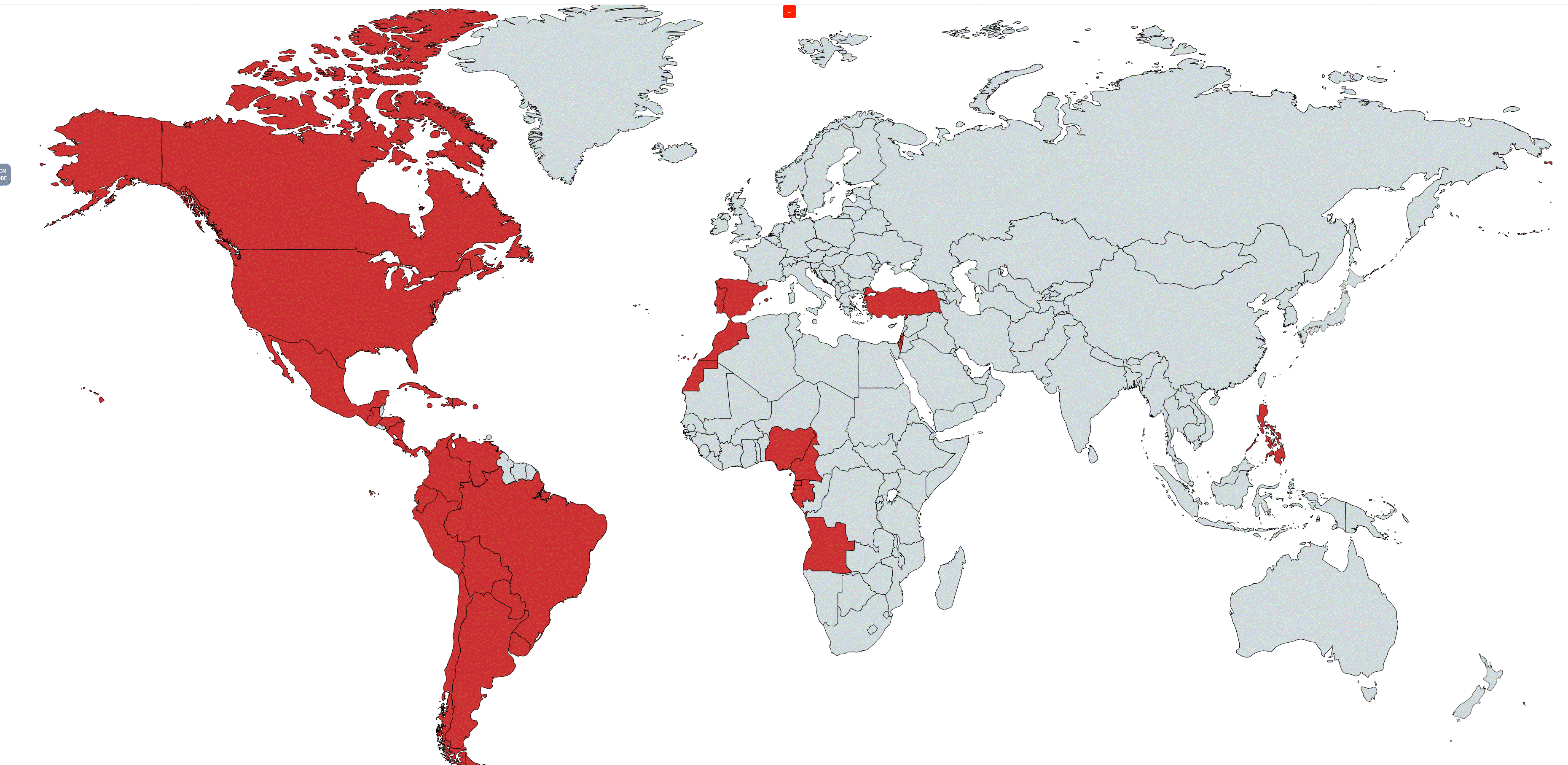
Did you know that Spanish is one of the most spoken languages in the world? With about 580 million speakers, it is only second to Mandarin Chinese as mother tongue (and Mandarin Chinese might be better defined as a set of mutually intelligible dialects). English is the most spoken language as a second language. Spanish is also one of the six official languages of the United Nations and one of the most studied as a foreign language.
Spanish is the official language in 20 countries in the Americas, one in Europe and two in Africa, by declaration or adoption in governmental institutions, as in the case of Argentina. More than 400 million native Spanish-speakers live in the Americas, from Argentina and Chile to Canada and the United States. The US, it bears mentioning, with some 55 million Spanish speakers, has become the second Spanish-speaking country in the world, after Mexico, despite Spanish not being an official Spanish language.
Spanish is also the official language in the African nations of Equatorial Guinea and the Sahrawi Arab Democratic Republic and is spoken in Cameroon, Nigeria, Gabon, Morocco, Angola, Turkey, Israel, Philippines, Brazil, and several islands in Oceania.
Historia del español y su gramática
La gramática y su estudio
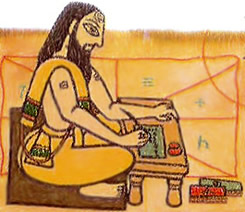
La palabra “gramática” se refiere tanto a las normas que rigen la producción y comprensión del idioma, como a su estudio. Entendida como conjunto de reglas y principios que gobiernan el uso de una lengua concreta, ¡la gramática es tan antigua como la más antigua de las lenguas!
En tanto estudio de las reglas, tiene una historia milenaria. Las gramáticas más antiguas que se conocen provienen de la antigua India, y tratan de las reglas del idioma sánscrito. El gramático indio más reconocido fue Panini, cuya obra, escrita en el siglo IV AEC, ¡estableció conceptos aún utilizados hoy en día! En el mundo occidental, la gramática surgió como disciplina en Grecia, con varios autores, entre ellos Aristarco de Samotracia, quien la bautizó “el arte de las letras”. En la Antigua Roma, la gramática latina se desarrolló con base en los preceptos griegos, y se convirtió en uno de los pilares de la enseñanza de las artes de la elocuencia, con la retórica y la dialéctica (impartidas junto a las artes de los números).
El nacimiento del español
A lo largo de la Edad Media, diversos factores contribuyeron al surgimiento de lenguas romances (también denominadas románicas o neolatinas), entre ellas, el español. La estricta prescripción gramatical del latín clásico —ya diferenciado del latín vulgar o popular— y las nuevas condiciones geopolíticas de un imperio fragmentado fomentaron una fractura lingüística que, paulatinamente, dio origen a lenguas vernáculas heterogéneas (específicas de cada región), aunque interrelacionadas.
En España, donde coexistían diversas lenguas romances —como el gallego, el castellano, el catalán, el leonés y el asturiano— comenzó a fines del siglo XI un proceso de reunificación lingüística gracias a la difusión del español como la lengua de los cantares de gesta (que servían de ejemplo e inspiración, lo mismo que las historias de los superhéroes de hoy). Durante el reinado de Alfonso X de Castilla y León, el español adquirió estatus oficial, ya que el rey hizo redactar directamente en castellano o traducir a éste, y no al latín, como hasta entonces, todos los documentos oficiales.
Junto al ascenso político de las nuevas lenguas, surgió la necesidad de estudiarlas en derecho propio. El sevillano Antonio de Nebrija fue el primer estudioso de lenguas romances en comprender la importancia de asentar por escrito la gramática de las nuevas lenguas. Así, en 1492, publicó en Salamanca su Gramática de la lengua castellana, que no sólo es el primer tratado de gramática de la lengua española, sino también el primer tratado impreso de una lengua romance. En el prólogo a la Reina Isabel la Católica, indica:
Cuando bien conmigo pienso, muy esclarecida reina: […] y pongo delante de los ojos todas las cosas que para nuestra recordación y memoria quedaron escritas, una cosa hallo y saco por conclusión muy cierta: que siempre la lengua [latina] fue compañera del imperio [romano]; y de tal manera lo siguió, 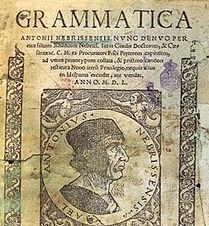 que juntamente comenzaron, crecieron, y florecieron, y después junta fue la caída de entrambos […] Y porque mi pensamiento y voluntad siempre fue engrandecer las cosas de nuestra nación, y dar a los hombres de mi lengua obras en que mejor puedan emplear su ocio […], acordé ante todas las otras cosas asentar el arte de este nuestro lenguaje castellano, para que lo que de ahora en adelante en él se escribiere pueda quedar en un estilo, y extenderse en toda la duración de los tiempos que están por venir, como vemos que se ha hecho en la lengua griega y latina, las cuales por haber sido estudiadas en su arte, aunque sobre ellas han pasado muchos siglos, todavía perduran en su uniformidad.
que juntamente comenzaron, crecieron, y florecieron, y después junta fue la caída de entrambos […] Y porque mi pensamiento y voluntad siempre fue engrandecer las cosas de nuestra nación, y dar a los hombres de mi lengua obras en que mejor puedan emplear su ocio […], acordé ante todas las otras cosas asentar el arte de este nuestro lenguaje castellano, para que lo que de ahora en adelante en él se escribiere pueda quedar en un estilo, y extenderse en toda la duración de los tiempos que están por venir, como vemos que se ha hecho en la lengua griega y latina, las cuales por haber sido estudiadas en su arte, aunque sobre ellas han pasado muchos siglos, todavía perduran en su uniformidad.
(Nebrija, 1492. Gramática.
Adaptación del español antiguo, hecha por la autora)
Ese mismo año, Cristóbal Colón recibió la autorización de los Reyes Católicos para buscar nuevas rutas mercantiles a las Indias por el Atlántico. España, como muchos reinos anteriores, buscaba expandir su poder. Durante esta expansión, el descubrimiento y posterior conquista de un nuevo continente propiciaron la difusión del castellano como lengua franca.
Sin embargo, el largo proceso de castellanización iniciado por los conquistadores fue mucho más lento que la expansión geopolítica y religiosa. Como consecuencia de la concesión papal de tierras al reino de España, en tanto vicario del dios católico, se consideró a los indígenas súbditos de la corona, a quienes había que cristianizar y cobrar impuestos. La tarea de comunicación, eminentemente lingüística, recayó sobre los misioneros, quienes en gran medida abogaron por el uso de las lenguas nativas, y se abocaron al desarrollo de materiales pedagógicos, como gramáticas y glosarios bilingües. En un principio, fueron los españoles quienes adoptaron el bilingüismo para provecho económico y religioso, no sin la ayuda de un grupo invaluable de hablantes nativos de las lenguas aborígenes, que se convirtieron en intérpretes y eran a menudo producto de la esclavitud o el mestizaje. Sin embargo, la comunicación con grupos lingüísticos tan diversos era muy dificultosa. En pos de paliar esta situación sin dejar de “respetar” el uso de idiomas nativos, en 1570, el rey Felipe II decretó el náhuatl como lengua oficial de Virreinato de la Nueva España (creado en 1535). Esta imposición resultó insostenible, ya que se trataba de una lengua extranjera tanto para los españoles como para muchos pueblos nativos. En 1696, el rey Carlos II estableció el español como único idioma oficial del virreinato. De esta manera, el español se convirtió en la primera lengua europea moderna en enseñarse masivamente como segundo idioma.
El español de las Américas
El español de los criollos, hispanohablantes nativos nacidos en América, era, para finales del siglo XVII, una versión del español peninsular con características propias. El español criollo se había desarrollado con base en la fonética meridional andaluza (con el seseo y la caída de las consonantes finales como en /usté/), la inclusión de indigenismos (como maíz, maní, huracán y chocolate) y la sintaxis sevillana (que incorporó el uso de usted/ustedes en detrimento del vos/vosotros) [i].
De cara a una nueva realidad lingüística transcontinental, en 1713 se fundó en España la Real Academia Española, “para cultivar y fijar en el modo posible la pureza y elegancia de la lengua castellana” mediante la creación de un diccionario, “el más copioso que pudiere hacerse”.
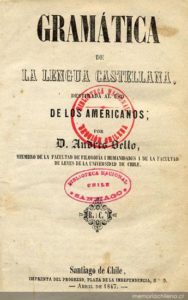 Durante más de un siglo, el español americano ocupó un lugar sumiso frente al peninsular, hasta que en 1847 el estudioso venezolano Andrés Bello escribió su Gramática de la lengua castellana destinada al uso de los americanos. Entendiendo que “cada lengua tiene su genio, su fisonomía, sus giros”, Bello se abocó a la tarea de darle al español americano su identidad innovadora basándose en la observación.
Durante más de un siglo, el español americano ocupó un lugar sumiso frente al peninsular, hasta que en 1847 el estudioso venezolano Andrés Bello escribió su Gramática de la lengua castellana destinada al uso de los americanos. Entendiendo que “cada lengua tiene su genio, su fisonomía, sus giros”, Bello se abocó a la tarea de darle al español americano su identidad innovadora basándose en la observación.
No he querido […] apoyarme en autoridades, porque para mí la sola irrecusable en lo tocante a una lengua es la lengua misma. […] El adelantamiento prodigioso de todas las ciencias y las artes, la difusión de la cultura intelectual y las revoluciones políticas, piden cada día nuevos signos para expresar ideas nuevas.
(Bello, 1847, Gramática)
Bello no pretendía “escribir para los castellanos” (refiriéndose a los españoles de la península), pero sí apuntaba a la unificación de la lengua en las nacientes naciones americanas, retomando la idea de Nebrija de evitar la fragmentación lingüística (sobre todo desde el punto de vista sintáctico) por ser signo de debilitamiento cultural y político. En el Prólogo de su Gramática explicó su animosidad a los cambios sintácticos:
[…] el mayor mal de todos, y el que, si no se ataja, va a privarnos de las inapreciables ventajas de un lenguaje común, es la avenida de neologismos de construcción, que inunda y enturbia mucha parte de lo que se escribe en América, y alterando la estructura del idioma, tiende a convertirlo en una multitud de dialectos irregulares, licenciosos, bárbaros; embriones de idiomas futuros, que durante una larga elaboración reproducirían en América lo que fue la Europa en el tenebroso período de la corrupción del latín. Chile, el Perú, Buenos Aires, México, hablarían cada uno su lengua, o por mejor decir, varias lenguas, como sucede en España, Italia y Francia.
En pos de la unidad del idioma y, más específicamente, de la homogeneización de la sintaxis, Bello usó como modelo el español de la “gente educada”, que por tener acceso a una educación formal compartía la lengua aun estando en regiones muy alejadas, lo que promovía la comprensión.
Se prefiere este uso porque es el más uniforme en las varias provincias y pueblos que hablan una misma lengua, y por lo tanto el que hace que más fácil y generalmente se entienda lo que se dice; al paso que las palabras y frases propias de la gente ignorante varían mucho de unos pueblos y provincias a otros, y no son fácilmente entendidas fuera de aquel estrecho recinto en que las usa el vulgo.
(Bello, “Nociones preliminares”, Gramática, 1847)
La concientización sobre el español americano llevó hacia fines del siglo XIX a la creación de academias nacionales del idioma, la primera de las cuales fue la Academia Colombiana de la Lengua, fundada en 1871. Hoy en día existen 22 academias nacionales (en Argentina, Bolivia, Chile, Colombia, Costa Rica, Cuba, Ecuador, El Salvador, España, Estados Unidos, Filipinas, Guatemala, Honduras, México, Nicaragua, Panamá, Paraguay, Perú, Puerto Rico, República Dominicana, Uruguay y Venezuela). Las 22 academias colaboran en la Asociación de Academias de la Lengua Española (ASALE), que fue fundada en 1951 a instancias del entonces Presidente de México, Miguel Alemán Valdés, a fin de trabajar en pos de la unidad del idioma como patrimonio cultural.
El español panhispánico
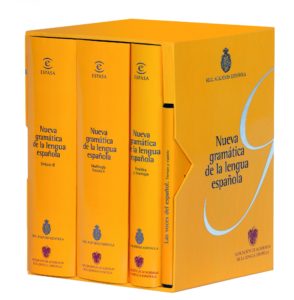 A principios del siglo XXI, casi un siglo después de la última gramática publicada por la Real Academia en 1931, ASALE reunió a estudiosos de todo el mundo hispanohablante para crear la primera gramática panhispánica consensuada. Colaboraron en la nueva gramática más de un centenar de estudiosos con el objetivo de describir las construcciones gramaticales propias del español en general, y al mismo tiempo dar cuenta de las variantes fonológicas, morfológicas y sintácticas propias de las diversas zonas. En 2009, se presentó oficialmente, bajo el lema “la gramática que somos”, la Nueva gramática de la lengua española. La obra cuenta con tres tomos sobre morfología, sintaxis y fonética y fonología, así como un DVD de voces del español con fines didácticos, que recoge la diversidad del idioma “en boca de hablantes de todas las áreas lingüísticas”.
A principios del siglo XXI, casi un siglo después de la última gramática publicada por la Real Academia en 1931, ASALE reunió a estudiosos de todo el mundo hispanohablante para crear la primera gramática panhispánica consensuada. Colaboraron en la nueva gramática más de un centenar de estudiosos con el objetivo de describir las construcciones gramaticales propias del español en general, y al mismo tiempo dar cuenta de las variantes fonológicas, morfológicas y sintácticas propias de las diversas zonas. En 2009, se presentó oficialmente, bajo el lema “la gramática que somos”, la Nueva gramática de la lengua española. La obra cuenta con tres tomos sobre morfología, sintaxis y fonética y fonología, así como un DVD de voces del español con fines didácticos, que recoge la diversidad del idioma “en boca de hablantes de todas las áreas lingüísticas”.
Según un reciente estudio realizado con base en datos recogidos en mensajes de Twitter, se puede decir que siguen existiendo tres grandes regiones hispanohablantes, que reflejan en parte los patrones de asentamiento colonial, y muestran divergencias internas propias a cada región. La península ibérica constituye el conglomerado original, la región centroamericana del Caribe, junto a México y Perú, conforman el segundo conglomerado, y, finalmente, el Cono Sur constituye el conglomerado más joven. A esto debemos quizás hoy agregar el crisol de dialectos en el que se ha convertido Estados Unidos, donde confluyen hablantes de las tres regiones anteriores.
Hoy en día hay unos 500 millones de hispanohablantes en el mundo. ¡El español es la una de las lenguas más habladas en el mundo como lengua materna![ii] El español es además uno de los seis idiomas oficiales de las Naciones Unidas[iii]. Más de 400 millones de hispanohablantes habitan países donde el español es la lengua oficial (por declaración o adopción en las instituciones gubernamentales), y unos 75 millones habitan en países donde el español no es reconocido como lengua oficial (como en Estados Unidos o Brasil). De la totalidad de hablantes de la lengua española, 90 por ciento reside en países americanos, de Argentina y Chile a Canadá y Estados Unidos.
En Estados Unidos, el español es la segunda lengua materna del país, con casi 40 millones de hablantes[iv]. Sin embargo, muchos de ellos no han tenido acceso al tipo de educación a la que se refirió Bello, y han adquirido su idioma sólo en forma oral y sin instrucción formal. Otro aspecto del español estadounidense es que existe una gran diversidad dialectal, poco estudiada.
A pesar de que el español no es un idioma oficial en Estados Unidos, muchos organismos oficiales, organizaciones no gubernamentales y empresas privadas hacen traducir gran cantidad de documentos al español[v]. Lamentablemente, no siempre las traducciones están en manos de profesionales capacitados, y esto ha hecho que muchos textos estén muy mal traducidos o escritos en un español que resulta, en la práctica, ininteligible. ¡Es esto lo que queremos evitar! Debemos reconocer también el trabajo incansable que muchos y muy buenos traductores han brindado en los diversos ámbitos mencionados, y la colaboración que se está forjando entre el gobierno y la Academia Norteamericana de la Lengua, especialmente en lo referente a consultas sobre el sitio web GobiernoUSA.gov.
En pos de la comunicación
Este post se publicó originalmente en Al rescate del español (ex Cuatro mosqueteras) el 28 de junio de 2016. con el deseo de dar acceso a los hispanohablantes estadounidenses a nociones de gramática y escritura tendientes a la comunicación eficaz.
Sigue siendo mi deseo aydar a transmitir un mensaje claro, en el que el escritor diga realmente lo que quiere decir, sin los malentendidos ni la confusión que llevan a aclaraciones, afrentas y altercados innecesarios. El trabajo en pos de la comunicación clara apunta a cumplir con el deseo de Nebrija de escribir correctamente para nosotros y para nuestro porvenir, teniendo en cuenta nuestras circunstancias.
Notas
[i] Derivado de “vuestra merced”. Una consecuencia importante del reajuste pronominal fue la diferenciación regional entre zonas con tuteo (uso de tú) y zonas con voseo (uso de vos) para la forma familiar de segunda persona del singular en América, y la distinción con España en la segunda persona del plural (en América se usa “ustedes” tanto formal como informalmente, mientras que España se distingue entre “ustedes” y “vosotros”).
[ii] El libro de datos de la Agencia Central de Inteligencia considera al español como segunda lengua materna del mundo, detrás del chino mandarín, y delante del inglés, aunque el inglés es la lengua franca moderna con la mayor cantidad de hablantes como segunda lengua.
[iii] Los cinco restantes son, en orden alfabético árabe, chino, francés, inglés y ruso.
[iv] Según una investigación del Pew Research Center del año 2013.
[v] Una tendencia que se inició con la promulgación de la Ley de Derechos Civiles en 1964 (que promueve la traducción de información destinada a los ciudadanos y residentes del país, en reconocimiento de las necesidades de las minorías).
References / Bibliografía
BELLO, Andrés. 1847. Gramática de la lengua castellana destinada al uso de los americanos. Edición digital a partir de Obras completas. Tomo Cuarto, 3ªed., Caracas, La Casa de Bello, 1995. http://www.cervantesvirtual.com/portales/andres_bello/obra-visor-din/gramatica-gramatica-de-la-lengua-castellana-destinada-al-uso-de-los-americanos–0/html/ff6ef310-82b1-11df-acc7-002185ce6064_44.html. Consulta del 27/2/16.
BRAVO, Eva. “Rasgos de procedencia andaluza en la variedad americana”. Español de América. http://www.xn--espaoldeamerica-1qb.com/rasgos-de-procedencia-andaluza-en-la-variedad-americana/. Consulta del 27/2/16.
CIFUENTES, Bárbara. 1998. Letras sobre voces: multilingüismo a través de la historia. México. Centro de Investigaciones y Estudios Superiores en Antropología Social e Instituto Nacional Indigenista.
DE NEBRIJA, Antonio. 1492. Gramática de la lengua castellana. http://www.filos.unam.mx/LICENCIATURA/Pagina_FyF_2004/ introduccion/Gramatica_Nebrija.pdf. Consulta del 3/5/16.
Estatutos de la Real Academia Española. Estatutos_1715.pdf. http://www.rae.es/la-institucion/organizacion/estatutos. Consulta del 3/7/16.
FRAGO GRACIA, Jose Antonio. Historia del español de América. Madrid, Gredos.
GONÇALVES, Bruno y SÁNCHEZ, David. “Crowdsourcing Dialect Characterization through Twitter”. PlosONE. http://journals.plos.org/plosone/article?id=10.1371/journal.pone.0112074. 19 de noviembre de 2014. Consulta del 3/5/16.
GONZALEZ-BARRERA, Ana y HUGO LOPEZ, Mark. “Spanish is the most spoken non‑English language in U.S. homes, even among non-Hispanics.” http://www.pewresearch.org/fact-tank/2013/08/13/spanish-is-the-most-spoken-non-english-language-in-u-s-homes-even-among-non-hispanics/. 13 de agosto 2013. Consulta del 3/10/16.
Languages. The World Factbook. Central Intelligence Agency. https://www.cia.gov/Library/publications/the-world-factbook/fields/2098.html. S.f. Consulta del 2/10/16.
MARIMÓN LLORCA, Carmen. “El español en América: de la conquista a la Época Colonial”. http://www.cervantesvirtual.com/obra-visor/el-espaol-en-amrica-de-la-conquista-a-la-poca-colonial-0/html/00f4b922-82b2-11df-acc7-002185ce6064_2.html. S.f. Consulta del 2/14/16.
KRAMER, Samuel Noah. (1988). History Begins at Sumer: Thirty-Nine Firsts in Recorded History. Philadelphia, PA. University of Pennsylvania Press. (3ra ed.)
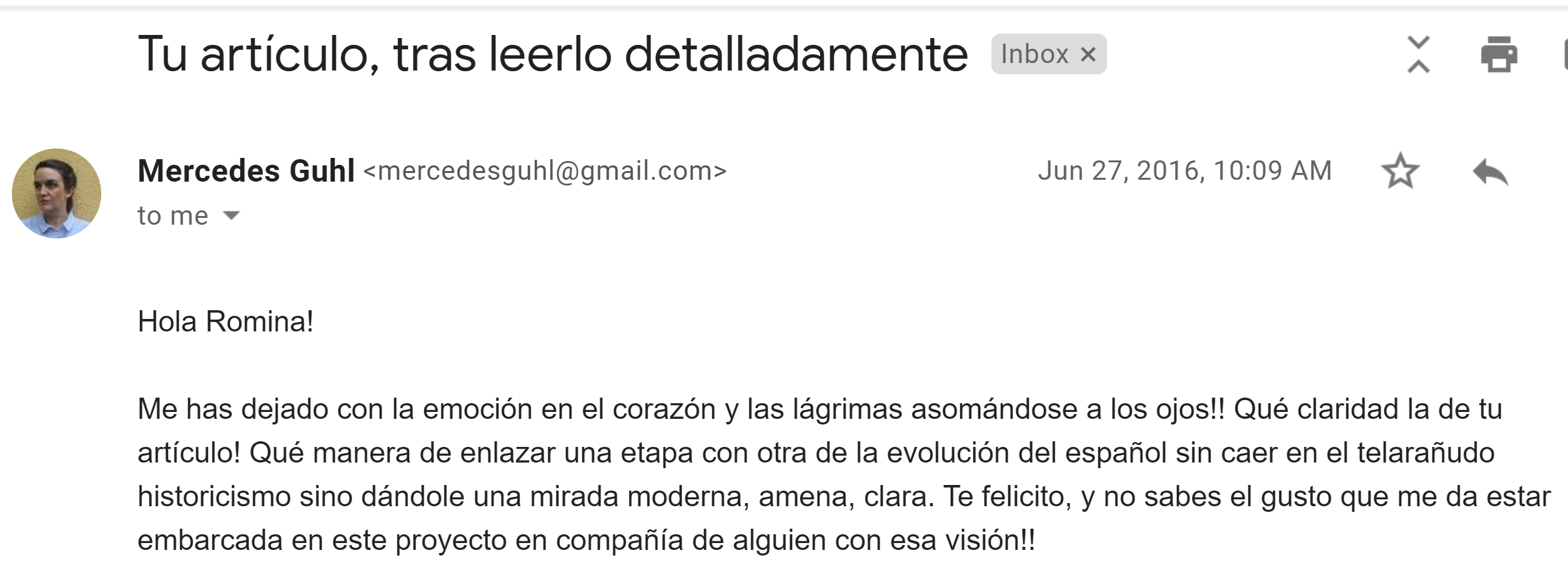
Translation:
You have filled my heart with emotion, tears are welling up in my eyes! What clarity you have poured into this article! What a way to weave one stage into the next in the evolution of the Spanish language without falling prey to the spider’s web of “historicism” but rather giving it a modern, fresh, and clear take. Congratulations! You don’t know how pleased I am to embark on this project in the company of someone with your vision!
